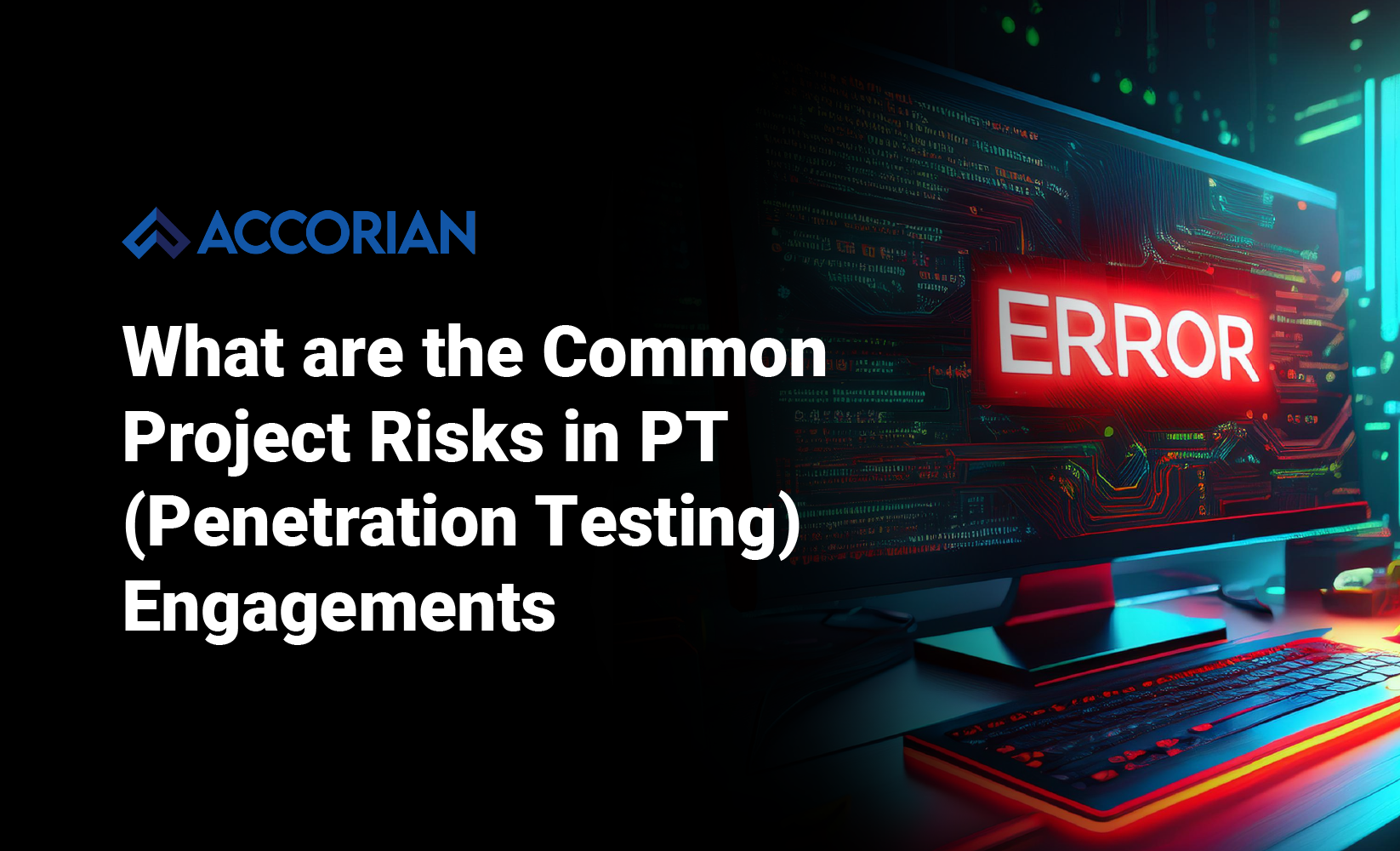An essential part of an organization’s annual cybersecurity plan is having an independent entity conduct penetration testing across its assets. This entails finding and evaluating weaknesses in networks, applications, APIs, cloud assets, and other systems. The National Vulnerability Database (NVD) recorded 28,831 vulnerabilities in 2023. This figure highlights the ever-expanding threat landscape and the importance of pen tests. However, if ignored, several risks could affect a penetration testing project’s efficacy and value to the company and how well it succeeds.
By developing a greater understanding of the listed risks, organizations can improve the overall effectiveness of their penetration testing initiatives and fortify their security posture.
Common Project Risks in Pen Test Projects
Common project risks in pen test projects include the following:
1. Insufficient Communication
Effective communication among the project team members, project managers, and internal/external stakeholders is essential. Keeping the stakeholders informed during the penetration test fosters trust and collaboration. Stakeholders can provide necessary resources, such as access to systems, documentation, and personnel, which can aid in the efficiency and effectiveness of a penetration test. Poor communication can lead to inadequate information sharing, misunderstandings, expectations misalignment, and project timeline delays. Often, incorrect prerequisites lead to delays in the assessment. During the assessment process, it is crucial to have a customized communication plan that includes emails, brief meetings, and project status reports.
2. Inadequate Scoping and Goal Setting
Without a clear scope and well-defined goals and objectives, the project can become abstract, potentially missing out on critical vulnerabilities and prioritizing less important areas.
Although communication plays an important role in mitigating this risk, it’s not the only criterion. It is essential to define the project objectives with the right stakeholders at the outset, understand their requirements, and ensure they are specific, measurable, achievable, relevant, and time-bound. You can always update the scope as required while you move forward.
The rules of engagement help tackle risks. They include establishing ground rules for planning, executing, and reporting the engagement. Detailing the scope, prerequisites, testing window, and testing schedule adds to the definition.
3. Scope Creep
The inclusion of additional assets for testing can delay the project’s initiation, which eventually leads to a delay in the completion of the project. Also, as the project progresses, the scope may tend to expand, potentially leading to increased time and resource requirements and a potential shift in project priorities. Here are a few things you should be aware of when it comes to Scope Creep.
- It is critical to evaluate the deviation that scope creep is introducing and actively seek to ascertain the optimal course of action. Sort requirements according to how they will affect the project’s objectives.
- Maintain detailed documentation of project requirements, scope, and changes. This helps track the evolution of the project scope and provides a reference point for decision-making.
- An example to elaborate on the term “Scope Creep” would be a scenario where a hundred hosts have been listed for an external network penetration test against a defined scope of fifteen. It is important to segregate the fifteen hosts you’d like to be tested as per your requirement. You can also work with the engagement team to expand the scope as per your reference.
4. Lack of Stakeholder Support
If key stakeholders don’t provide sufficient buy-in, it can lead to delays, misunderstandings, and a lack of resources necessary for the success of the penetration testing project.
Communication with stakeholders on a frequent basis to cultivate a good rapport is essential. Developing rapport and trust with them will help motivate them to participate in the project. The communication plan that was developed at the onset should help keep them informed of all project updates and potential risks.
It is crucial that the communication between the engagement team ensures all involved stakeholders understand the challenges. Here’s an example of a scenario. What if the testing team ran into non-functional features during an application penetration test? The necessary teams must be aware and get involved to resolve the issue as soon as possible. This issue, if unresolved or delayed, could result in:
- The testing team not being able to test the necessary features of the application, leading to an incomplete test report
- A delay in completing testing
The application team being involved at the right time combats the situation.
5. Technical & Operational Limitations
Some systems or applications may have technical limitations that make testing difficult or impossible, potentially leading to incomplete or inaccurate results. Non-functional features, inadequate access to systems, and unreachable assets are a few technical limitations observed during penetration tests. The penetration team’s lack of access to appropriate test data tops the list of technical limitations.
Clearly defining the prerequisites of the penetration test is always beneficial in avoiding this risk. It is necessary to thoroughly analyze the technical environment before initiating the penetration test, for such issues, and ensure to continuously communicate the issues to the stakeholders as soon as they are identified.
During a web application penetration test, not having access to the necessary features of the application hinders the detection of vulnerabilities and limits the depth of analysis. This may lead to overlooking critical flaws that attackers could exploit. It also does not help accurately reflect the application’s security posture.
6. Resource Constraints
For penetration tests, it is important to share accurate pre-requisites with the assessment team to ensure full coverage of the scope and timely completion of tests. Identifying an individual to provide the necessary information and support is crucial for the successful completion of penetration testing. Limited access to infrastructure, tools, or skilled personnel can hinder penetration testing, leading to incomplete assessments and potentially overlooked security gaps.
Along with recognizing skilled individuals to facilitate the penetration tests, it is essential to prioritize tasks based on their importance. Recognizing the work involved in a penetration test and appropriately allocating resources is beneficial to the project.
7. Incomplete Patch Cadence
This risk leads to non-compliance with regulatory standards and frameworks, security vulnerabilities, and inconsistent security posture. With incomplete patches, organizations remain exposed to vulnerabilities that could lead to data breaches or loss of sensitive information. Incomplete patching refers to vulnerabilities being unaddressed in software and systems increasing the attack surface and providing entry points for attackers.
It is crucial to implement a robust patch management process that ensures the timely and complete application of patches as part of a broader security strategy.
Conclusion
To conclude, to ensure the effectiveness of penetration testing it is critical to identify these common project risks and mitigate the threats to improve an organization’s security posture to ensure the effectiveness of penetration testing engagements.
FAQs on Common Project Vulnerabilities in Penetration Test Engagements
Penetration testing helps identify and evaluate vulnerabilities across an organization’s systems, ensuring a strong cybersecurity defense.
Common risks include insufficient communication, inadequate scoping, scope creep, lack of stakeholder support, and resource constraints.
Poor communication can lead to misunderstandings, delays, and misalignment of expectations, which can impact the project’s success.
Scope creep occurs when additional assets or tasks are added to the test, causing delays, increased resource requirements, and potential shifts in project priorities.
Stakeholders provide essential resources and access to systems, and their involvement ensures the project stays on track and addresses key vulnerabilities.




